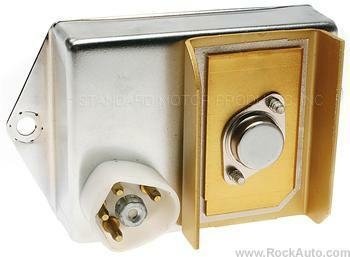The pick-up coil inside the distributor is a much better suspect. If you unplug it and do a continuity test, a typical value is between 500 and 800 ohms. Do not worry about the exact value. If it is bad, it will read open.
Some applications used a distributor with two pick-up coils. On those, you will see two pair of wires coming out, each with their own plug. To do a quick test, switch the plugs around. One of those pick-up coils is used during cranking. It provides for slightly retarded timing to make starting easier. Once the ignition switch is released from the "crank" position, the other pick-up coil is switched in for the engine to run on. That switching was done with a relay which is another possible suspect.
There were two ignition systems used around this time period. One used a computer that was hung on the driver's side of the air filter housing. The other system used the common five-pin ignition module, (only four are used starting with 1980 models), as shown in the photo. The color of the box denotes the maximum engine speed it will work up to, but they all interchange. This module is usually mounted on the passenger-side inner fender, but it could also be on the firewall. The body of that module must be bolted solidly to the body to provide the ground circuit. Check if the sheet metal is rusty or those bolts are loose.
Image (Click to make bigger)
Monday, June 4th, 2018 AT 8:36 PM




